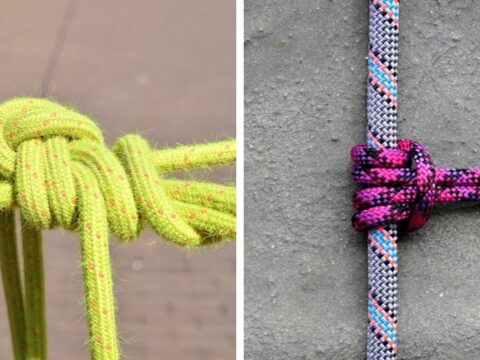There is no denying the absolute satisfaction one can achieve when climbing.
Rock climbing provides you with a little bit of everything, from beautiful sceneries and memorable achievements to lots of health benefits.
But before putting on your climbing shoes, you should research the variety of knots used for rock climbing.
Distel hitch and Prusik knot are two of many knots that we will be discussing here.
Table of Contents
Distel Hitch vs Prusik
Climbers use the Distel hitch knot to ascend or descend a rope. This hitch has high friction, so it doesn’t slip or jam when appropriately set. On the other hand, the Prusik knot is commonly used as a friction hitch for ziplining, mountaineering, climbing, etc.
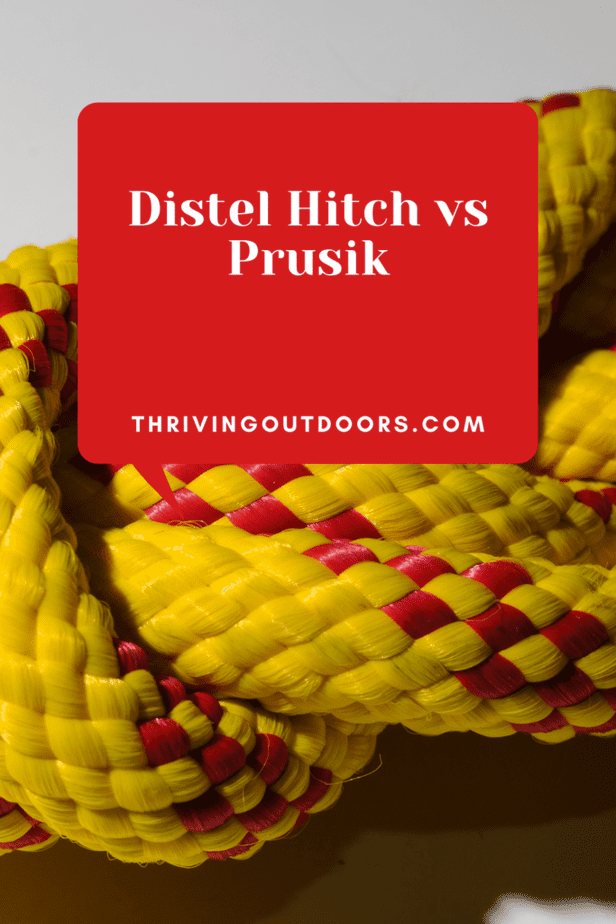
The Distel Hitch
Climbers use a Distel hitch when you descend or ascend a rope. The high frictional nature of the distal hitch knot doesn’t allow it to slip or jam.
The intense friction from one direction gives climbers freedom to use it either as a positioning strop or the main climbing line.
Although this knot is similar to a prusik knot, it has better friction. So it allows the climber more control and support.
Tying a Distel Hitch
Here are a few steps you need to follow when tying a Distel hitch.
1. Take a smaller rope or lanyard and tie an eye on both ends.
2. You can tie the eyes or loops but take both ends of the rope and wrap it twice around the bight of the string.
3. Secure the ends by passing them through the loops and tighten.
4. Now, take one end of the lanyard, wrap it twice around your main climbing line, and make two half hitches.
5. Now pass the lanyard down the hitch thrice and tighten.
6. Take your carabiner and attach it to both loop eyes.
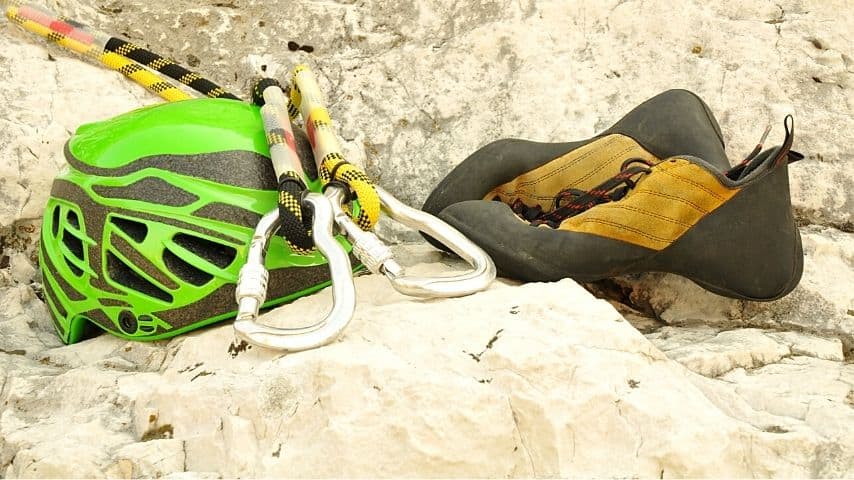
Advantages of a Distel Hitch
A Distel hitch is handy compared to other knots.
This knot has a better grip and is also pretty easy to tie. Unlike other knots that tend to jam when weighted, the Distel Hitch releases easily and can better carry loads.
The Distel hitch is also very beneficial for arborists as both its ends can carry the load, and the lanyard’s length isn’t too important.
Disadvantages of a Distel Hitch
Although the Distel hitch is extremely helpful when carrying loads, the Distel hitch tends to get jammed as per the reports.
The Distel hitch also gets harder to slide in some situations.
The Prusik Knot
A Prusik knot is an alternate to Distel hitch for mountaineering, zipline, or climbing.
The Prusik Knot is a grip and slide hitch mainly used for ascending.
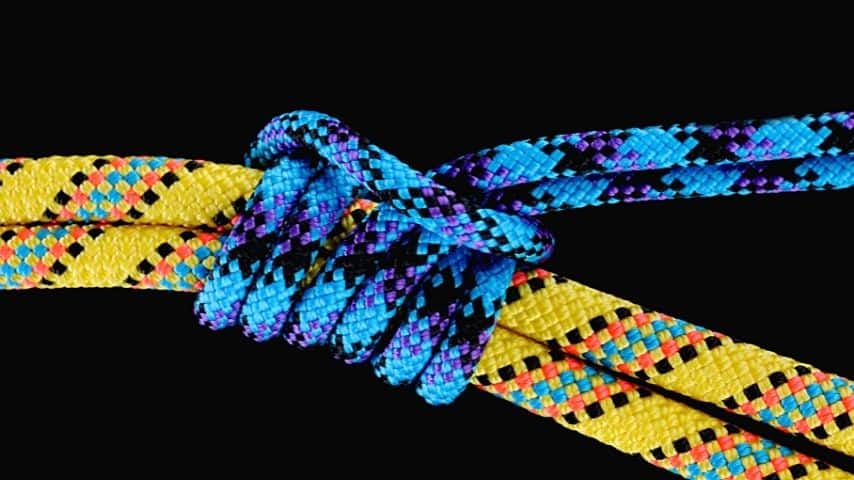
Prusik Knot is the most commonly used knot by climbers as it is the easiest to knot and carry. Dr. Karl Prusik is known to be the inventor of this knot.
Tying a Prusik Knot
As discussed above, the Prusik knot is one of the most leisurely knots. Here’s how to tie this kind of knot.
1. Take a small rope or lanyard and place it under your mainline.
2. Coil it once around the main climbing line, forming a girth hitch.
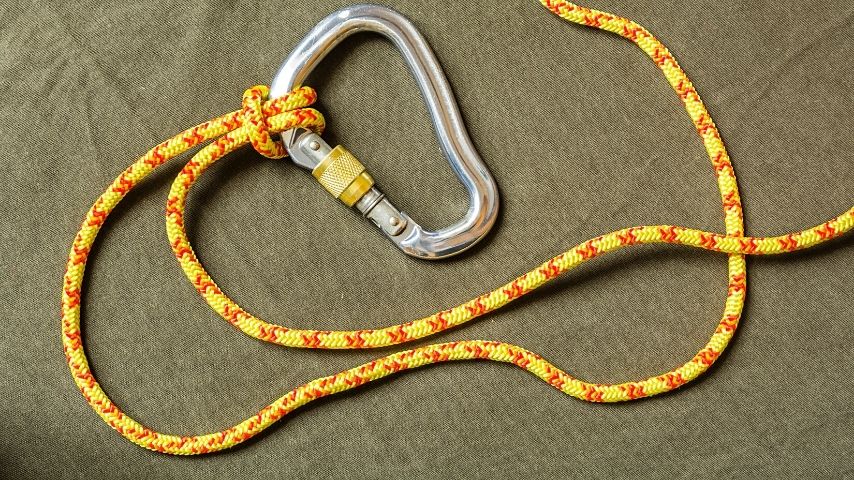
3. Now, take both the lanyard ends and pass those lanyard ends through the coil.
4. Tighten and test to check grip.
Uses
The Prusik knot has a lot of different applications other than being used for climbing.
1. Prusiking
To Prusik is to ascend a line.
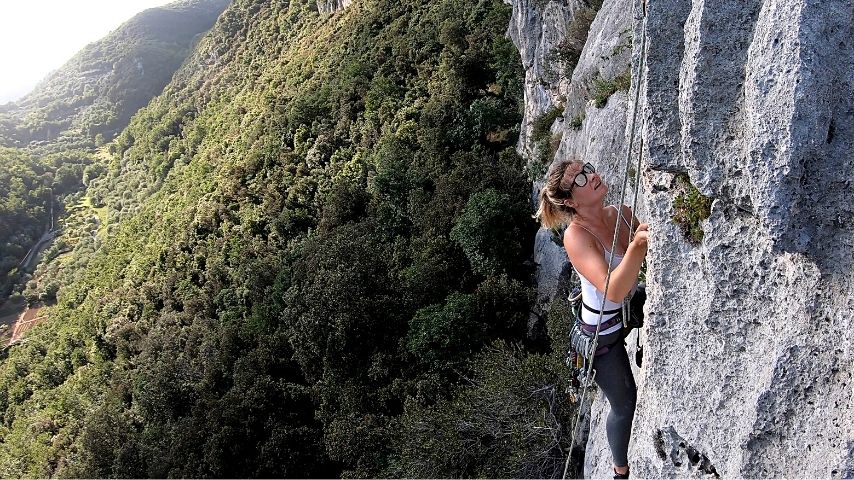
The climber can climb up, securing the harness Prusik knot before sitting down and sliding the foot loop higher so they can stand on it and slide the harness loop upward.
2. Handcuffs
Tie a Prusik around itself by using a longer length of rope so it forms two loops which can be helpful as handcuffs in emergencies.
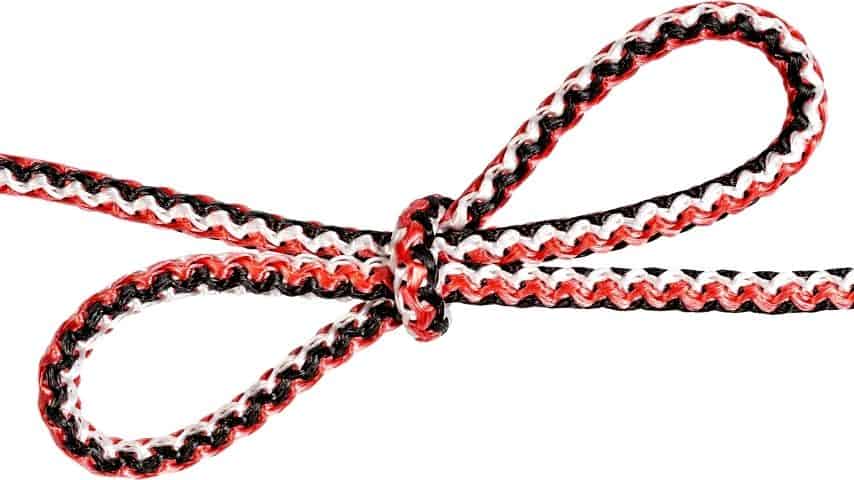
Once loops handcuff the detainee’s hands, pull the opposite ends of the strings to tighten the loops and work as makeshift handcuffs.
3. Rescue Operations
A Prusik knot can help in many rescue applications. The Prusik knot can be beneficial with a prusik minding pulley.
It can help create tension in the line while holding a load. Due to its high pressure, it can support dead weight and prevent it from going back down.
4. Climbing
Climbers carry prusik knots and equipment at all times for any emergencies.
Prusiks are useful for hazardous situations where the climbers can’t come down. Prusiks allow the climber to ascend in a condition where the other equipment fails.
Advantages of a Prusik Knot
Prusik knots are handy for emergency use as they are easy to carry around. Prusiks that are tied carefully give good support and don’t damage or break the rope.
Prusik knots are helpful for rescue situations.
They are also beneficial in a condition where you are required to haul multiple loads upward, and other mechanical rope-grabbing equipment isn’t available.
Disadvantages of the Prusik Knot
Although the Prusik knot has many advantages, the only few disadvantages we can mention is that it is ineffective with wet and frozen ropes.

Prusik can also get jammed and difficult to untie after being subjected to heavy loads. Some have reported that a prusik can loosen if left unused for a while.
Distel Hitch Vs Prusik Knot
Now that we have learned all there is about the two types of knots. Let us compare the two and determine which one you should use while climbing.
Strength
The first thing we should talk about is the strength of both the knots.
Although Prusik is easy to tie and carry around, Distel Hitch is proven to be more effective when you talk about grip.
The Distel Hitch provides the climber with better grip and control than the Prusik knot.
Convenience
When it comes to convenience, the Prusik knot takes the crown. Prusik knot is easier to tie and more convenient to use in emergencies as it’s lightweight.
The climber doesn’t always need to carry a rope to tie a prusik.
Instead, they can use their lanyard to make the knot. A Prusik knot might be more convenient if one climbs at night at a short height.
Friction
Since the Distel Hitch has more strength and grip, it also has more friction. The Distel hitch gives the main climbing line much more power than the Prusik Knot.
The Prusik is ineffective when the rope is wet, but the Distel Hitch doesn’t lose its function — making it much more effective than the Prusik.
Release
Although the Prusik is helpful in emergencies, when subjected to load, the Prusik proves stubborner to release and can get jammed at times.
The Distel Hitch releases like a dream and can be adjusted quickly after a heavy load.
Innovative
The Distel Hitch is much more innovative than the Prusik hitch, which is only helpful to ascend or descend.
Although the Distel Hitch requires a lot of wraps to grip onto the mainline firmly, it has many different uses.
It can work as an adjustable friction pulley when combined with a pulley.
Frequently Asked Questions about Distel Hitch Vs Prusik
Between the Distel Hitch and Prusik Knot, which one has more strength?
Although, Prusik is easy to tie and carry around. Distel Hitch is proven to be more effective when you talk about grip. The Distel Hitch provides the climber with better grip and control than the Prusik knot.
Is the Prusik knot more convenient?
The climber doesn’t always need to carry a rope to tie a prusik. They can use their lanyard to make the knot, thus, more convenient.
Which knot is easier to release, the Distel Hitch or the Prusik Knot?
Prusik can be very helpful in emergencies, but it can get jammed when it has too much load.
Which knot is more versatile?
The Distel Hitch is much more versatile than the Prusik hitch, which helps in both ascending or descending.
